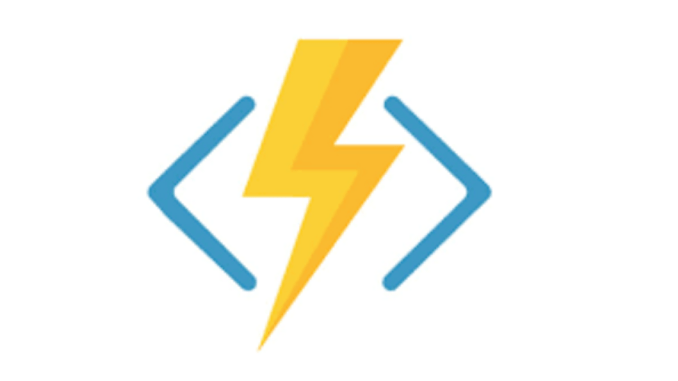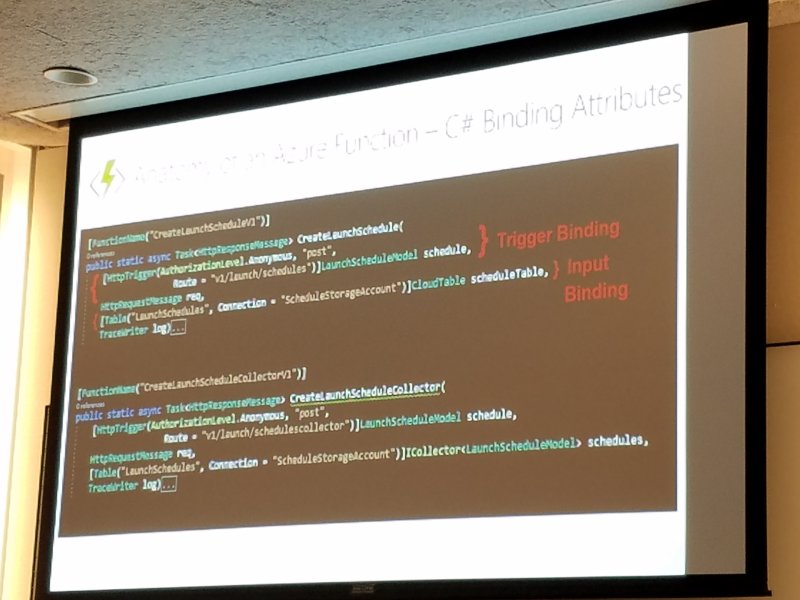Trinug Meetup - Building Serverless APIs with Azure Functions with Josh Carlisle

My notes from the April 11th meeting of TriNug. I don’t go to many TriNug events, but the topic for this one was too close to where I want to go with services and jobs at work… If it runs in less than 5 minutes and we can do it in C# or Java, then function should be the first option - not the last.
I have done minimal cleanup - consider this live noting.

Benefits of Azure Functions
- There really are servers with serverless - you just think about the servers… less Ha!
- Shorten development cycle from weeks or months to configure a box to a few minutes.
- Scale apps and instances dynamically with load. Possible with IAAS and PAAS, but functions do this by definition.
- Because the functions end they are more cost-effective. Only pay for what you use. Fractions of pennies at low volumes, but at a certain point they may be more expensive than a full VM. Essentially functions are using the spare compute at the data center.
- Ideal target is variable use, infrequent use routines.
Overview of Azure Functions
Building the App
- Add a function app to a resource group
- App name becomes the root for the endpoint
- Name is global within Azure, but you can pipe your custom domain
- Consumption vs App Service Plan
- Consumption is auto-scale
- App Service is consistent (CPUs, etc are set)
- Azure functions require Azure storage
- Can come down to zero instances
- Must have storage for the app to live (logs and so on too)
- Use Applications Insights - just do it, there is a free tier
- Can be done in the portal or using an ARM template, CLI, Powershell, whatever
- Can use the editor window within the app - but don’t for real projects
- use your own editor and source control etc
- Publish source code, compile in the function.
- Function.json is what defines the function
- Triggers only one per function
- File dumped to blob
- API trigger
- Cue
- Messages
- etc
- Output - can be multiple
- Blob
- Table
- http
- etc
- Triggers only one per function
Azure Functions Development Experience
- Languages
- C#
- Javascript - Node
- F#
- Soon
- Java, Experimental, PHP, Powershell, Python
- Local Dev support with a runtime Azure Functions CLI (same runtime as production)
- Does not scale
- Great for dev and make sure dev will run on production
- Runs on .Net 4.0
- Visual Studio Code Plugins
- VST (better for C#)
- .Net Core support in preview - opens support for linux and Mac local run runtime
Anatomy of a Function
 Trigger Binding and Input Binding in C#
Trigger Binding and Input Binding in C#
Keep in mind keys, if public then anybody can hit the endpoint
Basic Azure Functions with VS
Designate the route within the trigger binding (endpoint)
Azure Table storage - simple, cheap, easy Functions talk directly to table storage, define it as the output variable Can bind the table directly to the function. No extra coding needed (in C#)
In general - use the bindings for function. Saves dozens of lines of code. for instance Icollector or AICollector
Visual Studio Support
- Must be 2017
- Must have cloud workload extension
- Need Azure Functions and Web Jobs Tool Kits
In VST there are preset templates Some default Triggers like Timer etc
Trick - Azure Storage Explorer App
API development - Postman App (post and get from API’s without writing custom code)
Azure Functions Architecture Considerations
- Be aware of down stream data storage
- Be aware of long-running functions (more than 5 minutes)
- Ensure your functions are doing small amounts of work
- Breakdown large input files by a smaller number of rows
- Queues that are implemented in at front end may impact the traditional request flow
- Lots to orchestrate? Consider Durable Functions. Logic controller and flow controller.
Azure Function Proxies
- The proxies act as an interaction layer for the API
- Prevents hardcoding for the API
- Prevents inconsistencies in the API syntax if using multiple technologies (function vs logic app vs…)